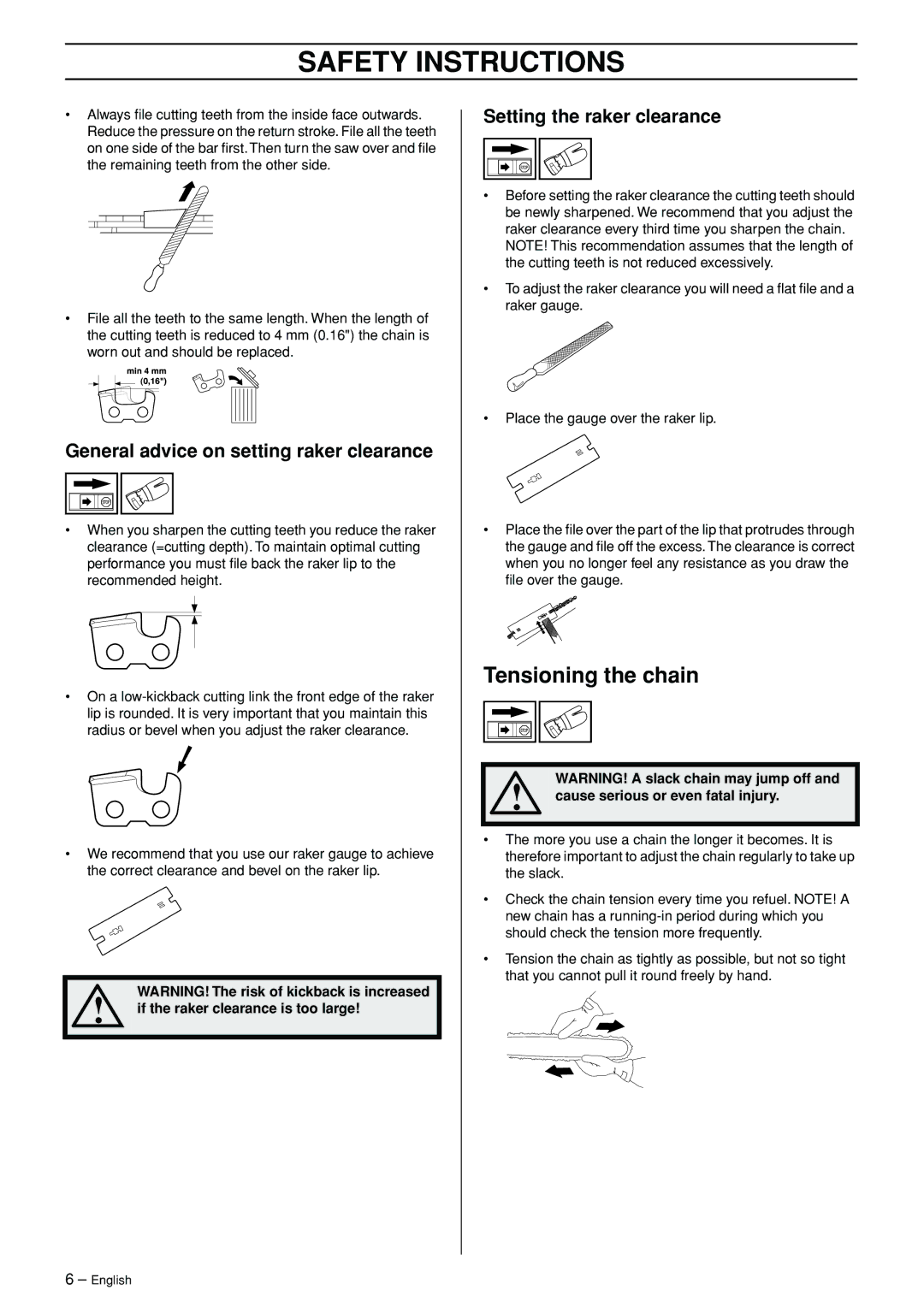
SAFETY INSTRUCTIONS
•Always file cutting teeth from the inside face outwards. Reduce the pressure on the return stroke. File all the teeth on one side of the bar first. Then turn the saw over and file the remaining teeth from the other side.
•File all the teeth to the same length. When the length of the cutting teeth is reduced to 4 mm (0.16") the chain is worn out and should be replaced.
General advice on setting raker clearance
•When you sharpen the cutting teeth you reduce the raker clearance (=cutting depth). To maintain optimal cutting performance you must file back the raker lip to the recommended height.
•On a
•We recommend that you use our raker gauge to achieve the correct clearance and bevel on the raker lip.
WARNING! The risk of kickback is increased
!if the raker clearance is too large!
Setting the raker clearance
•Before setting the raker clearance the cutting teeth should be newly sharpened. We recommend that you adjust the raker clearance every third time you sharpen the chain.
NOTE! This recommendation assumes that the length of the cutting teeth is not reduced excessively.
•To adjust the raker clearance you will need a flat file and a raker gauge.
•Place the gauge over the raker lip.
•Place the file over the part of the lip that protrudes through the gauge and file off the excess. The clearance is correct when you no longer feel any resistance as you draw the file over the gauge.
Tensioning the chain
WARNING! A slack chain may jump off and
!cause serious or even fatal injury.
•The more you use a chain the longer it becomes. It is therefore important to adjust the chain regularly to take up the slack.
•Check the chain tension every time you refuel. NOTE! A new chain has a
•Tension the chain as tightly as possible, but not so tight that you cannot pull it round freely by hand.
6 – English
